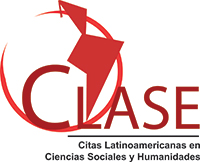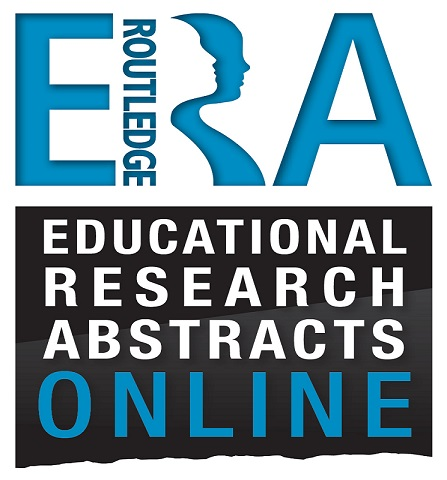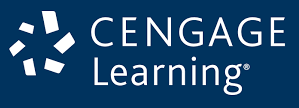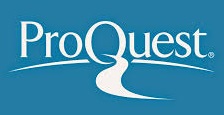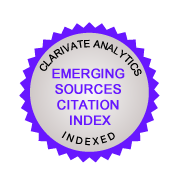Enacting a People-Centred Curriculum in ELT With Teenage Learners
DOI:
https://doi.org/10.15446/profile.v16n2.40902Keywords:
Communicative approach, curriculum enactment, learner-centred curriculum, teacher strategies. (en)In this paper we reflect on the extent to which the learner-centred curriculum in English language teaching includes teachers and learners. We briefly describe the top-down nature of curriculum development in Argentina, then describe and discuss personal and collaborative explorations based on our identities as teachers of English in secondary education with a people-centred approach in the classroom. Through this paper we wish to highlight pedagogies and teacher strategies which are enacted for and from the classroom and built around both teachers and learners. Recommendations for policy makers are included.
En este artículo reflexionamos sobre la medida en que el currículo basado en el estudiante incluye a docentes y estudiantes. Describimos la naturaleza descendente del desarrollo curricular en Argentina y discutimos exploraciones personales y colaborativas, basadas en nuestras identidades como profesores de inglés en la escuela secundaria, dirigidas hacia un enfoque que incluya los actores áulicos. Mediante este artículo buscamos resaltar aquellas pedagogías y estrategias docentes vividas desde y para el aula y construidas alrededor tanto de docentes como de estudiantes. El artículo incluye recomendaciones para autoridades ministeriales.
PROFILE
Issues in Teachers' Professional Development
Vol. 16, No. 2, October 2014 ISSN 1657-0790 (printed) ISSN 2256-5760 (online)
doi: https://doi.org/10.15446/profile.v16n2.40902
Enacting a People-Centred Curriculum in ELT With Teenage Learners
La vivencia de un currículo basado en los actores de la clase de inglés con adolescentes
Darío Luis Banegas*
University of Warwick, Coventry, United Kingdom
Aurelia Velázquez**
Colegio Salesiano San Luis Gonzaga, Esquel, Argentina
*D.Banegas@warwick.ac.uk
**aure7000@gmail.com
This article was received on November 13, 2013, and accepted on February 26, 2014.
This is an Open Access article distributed under the terms of the Creative Commons license Attribution-NonCommercial-NoDerivatives 4.0 International License. Consultation is possible at http://creativecommons.org/licenses/by-nc-nd/4.0/.
In this paper we reflect on the extent to which the learner-centred curriculum in English language teaching includes teachers and learners. We briefly describe the top-down nature of curriculum development in Argentina, then describe and discuss personal and collaborative explorations based on our identities as teachers of English in secondary education with a people-centred approach in the classroom. Through this paper we wish to highlight pedagogies and teacher strategies which are enacted for and from the classroom and built around both teachers and learners. Recommendations for policy makers are included.
Key words: Communicative approach, curriculum enactment, learner-centred curriculum, teacher strategies.
En este artículo reflexionamos sobre la medida en que el currículo basado en el estudiante incluye a docentes y estudiantes. Describimos la naturaleza descendente del desarrollo curricular en Argentina y discutimos exploraciones personales y colaborativas, basadas en nuestras identidades como profesores de inglés en la escuela secundaria, dirigidas hacia un enfoque que incluya los actores áulicos. Mediante este artículo buscamos resaltar aquellas pedagogías y estrategias docentes vividas desde y para el aula y construidas alrededor tanto de docentes como de estudiantes. El artículo incluye recomendaciones para autoridades ministeriales.
Palabras clave: currículo basado en el estudiante, currículo vivido, enfoque comunicativo, estrategias docentes.
Communicative Language Teaching and the Curriculum
More than forty years ago the concept of communicative competence, as noted in Fernández (2011), became conflated with the communicative approach which, in turn, became fused with communicative language teaching (Brumfit & Johnson, 1979). Since then, English language teaching (ELT) has placed learners at the heart of the curriculum (Nunan, 1988; Prapaisit de Segovia & Hardison, 2009).
In Graves’ (2008) words, a curriculum is “the processes and products of planning, teaching, and evaluating a course of study or related courses;” while a syllabus is “a plan for what is to be learned in a particular course or course of study” (p. 147). Graves observes that the specialist approach to curriculum development can be summarized as follows: planning is in the hands of a group of experts; implementation is in the hands of teachers. In our identity as teachers, we believe this is problematic for there exists a lack of alignment between the specialists’ own ideas and what we teachers implement inside the classroom. Instead, Graves proposes the concept of curriculum enactment to emphasize that a curriculum needs to be brought to life to have a purpose, and such a purpose, we shall add, is driven by careful needs analysis of the context in which this curriculum emerges. Yet, to what extent do teachers and learners play an active and equal role in curriculum development? How can we all become active agents and co-developers of this curriculum at the level of development and at the deeper level which curriculum enactment entails?
In this paper we discuss what ways teachers and learners are part of the learner-centred curriculum in ELT. First, we describe curriculum design in Argentina. Secondly, we discuss different pedagogical explorations based on our experience as teachers of English in secondary education. Last, drawing on these personal experiences, we put forward a people-centred curriculum which represents both learners’ as well as teachers’ voices.
Learners and Teachers in the Curriculum
Following the conceptualization of curriculum enactment, the learner-centred curriculum in ELT incorporates both learners and teachers (Nunan, 1988) with different yet complimentary roles (Tudor, 1993). We should all develop strategies “to bridge the gap between learning and instruction” as suggested in Nunan (1995, p. 133) in order to promote memorable and meaningful experiences that transcend the classroom.
While we cannot deny that the learner-centred curriculum and curriculum enactment embody by definition the relevance of context and a sociocultural view on language learning (Lantolf, 2000; Villacañas de Castro, 2013), developing a curriculum in state education is often far from participatory (Wang, 2007; but see Banegas, 2011). Along these lines Banegas (2013) notes that although there have been efforts to include teachers’ voices, the curriculum is still a top-down process, decontextualized at times, and teachers are seen as implementers. The author adds that curricula in Argentina advocate a learner-centred approach (Braun, 2011) yet teachers and learners are not systematically consulted and more often than not we teachers feel that, when consulted, our opinions are disregarded if these do not coincide with those of the curriculum developers.
In Argentina, as in many other contexts, Banegas (2013) explains that teachers receive the official curriculum as a guideline. In this sense, the curriculum may be prescriptive but it should not be seen as inflexible or imposed since teachers still have the freedom to depart from it. Nevertheless, the more teachers depart from it, the more we arrive at the co-existence of parallel, sometimes in-opposition, and observed curricula. Although we understand that a learner-centred curriculum should lead to learner-centred lessons (Jones, 2007) without thinking that teachers are overlooked, we sometimes feel, due to institutional or ministerial pressure, that we do not have a say and that our learners are customers we need to satisfy.
In our experience we develop our syllabus and lessons in a continuum which moves from teacher-centred to learner-centred ones. Such a continuum challenges the misleading extremes or a teacher-centred versus learner-centred dichotomy, and illustrates that a variety in lesson frontedness usually responds to perceived contextual dynamics (Garrett & Shortall, 2002; Lee & Ng, 2010). Yet, isolated practices may not be enough. Instead, we need to encourage and promote these undertakings by exploring our practices (Allwright & Hanks, 2009) and writing about them. That said, how can teachers and learners enact a curriculum which will include everyone’s voices? We believe that through this forum we may motivate colleagues to explore horizontal classrooms, that is, where tensions around power are discussed at the levels of practice and enquiry.
How to Incorporate Teachers’ and Learners’ Voices
In Argentina, as in many other contexts, English in secondary education is a mandatory subject and therefore learners’ motivation to learn English may be highly influenced by their desire to pass the subject. Consequently, teachers face the challenge of establishing a dialogue between learner motivation and their own motivation. From a relational view of motivation, Ushioda (2011, p. 203) asserts that we should move from “motivating the person rather than the L2 learner.” In a similar vein, we suggest that we should move from motivating the learner to motivating holistically all the people inside the classroom so that their voices find a meaningful place in the teaching and learning processes and the curriculum. This may lead to a people-centred approach in ELT.
We can incorporate teachers’ and learners’ voices by having teachers and learners discuss how they wish to teach and learn what they are supposed to learn, and in what ways they can add those contextual features which a top-down official curriculum will never provide. As Banegas (2013) reports, a group of teachers asked their learners to suggest topics, materials, and activities. At the end of each term, learners answered a survey to collect their suggestions. Learners’ preferences were then negotiated and incorporated into what teachers already had developed. Similarly, teachers can reflect and share with their colleagues and learners what their strengths are and what motivates them to teach a lesson. In so doing, we may discover that learner-suggested sources for listening indicate an interest in authentic materials, or we may realize that, as has happened to us, a teacher and learners interested in history may integrate the passive voice and World War II meaningfully.
Based on our classroom experience, taking into account learners’ interests becomes of paramount importance. As teachers, we should become involved with their everyday lives so as to gather—and then make use of—information as regards their likes and dislikes. The older the learners, the more aware they are of their learning styles. Some learners are more extroverted, some are keen on writing, others enjoy reading and debating, others prefer acting out. The same runs true among teachers. There are no two groups or teachers alike. This kind of information can be truly helpful, especially when dealing with groups of around 40 learners, a common feature in Argentina, and colleagues with different personal styles and lived experiences.
Involvement to enact the curriculum by promoting everyone’s participation can also be sought by accepting new challenges and activities promoted by other bodies. In 2013, one of the authors of the present paper was invited to contribute to a federal project led by the British Embassy in Buenos Aires. The authors of this article decided to work together by co-teaching a lesson on creative poetry writing. Learners created short poems based on authentic answer phone messages (Spiro, 2004) but what was innovative for everyone was that learners were invited to record their poems as those would be part of an open-access audio library online. Not only did the learners become part of this library, but also the teachers stepped in by recording their contributions.
If the learning atmosphere is friendly, the learners themselves may openly suggest activities or topics they are interested in. Fortunately, this has happened to us several times. Whenever learners voice their suggestions, we try to implement their ideas in different measures and ways. For example, a group of teenage learners once completed coursebook activ- ities on food but we supplemented the material with authentic videos from cookery programmes with the aim of promoting vocabulary identification and language functions. They welcomed this and suggested recording their own cooking videos. They exerted themselves to use as many verbs as possible and they posed many questions about pronunciation prior to recording. They were eager to share their videos and dishes with the rest of the class. In retrospect, we felt that what started as learners’ spontaneous reaction led to a project.
Such a project prompted another one about healthy habits and physical exercise. On this occasion, teacher and learners agreed to make a video or a class demonstration about a sport or other activity familiar to them. In class, the choice of sports was negotiated as learners did not wish to repeat them. Learners had to carry out internet searches for information as they realized they would need content and subject-specific vocabulary. Some of the videos included special locations and props. This was possible as the teacher felt involved in the project and did not remain as an outsider facilitator.
When working with coursebooks, teachers may add follow-up activities through which they can participate fully along with their students. In our school, a learner suggested describing clothes but also finding out about fashion through the decades. One of the teachers took this suggestion and added that each group should dress accordingly. What these learners did not know was that the teacher herself decided to take part and entered the classroom wearing striped Oxford trousers, a spotted T-shirt, a long black wig, huge sunglasses, and a flowery necklace.
While the experiences outlined above may depend on teachers’ individual characteristics, they all reinforce the need for involvement of all the people inside a classroom in different ways. If either the teacher or the learners are not truly involved, the lessons can turn out to be dull or meaningless. More often than not, we teachers find ourselves giving our learners tasks or activities we ourselves rarely find useful or relevant. Filling in the gaps, deciding whether statements are true or false, choosing the appropriate answer are mere examples. The truth is that our learners can perceive that we are not fully into the activity, and they complete them only because they have to. However, when we teachers are convinced that what we ask our learners to do is significant for them and for us, they will definitely launch themselves into the tasks. We should be captivated with the task so as to expand this feeling towards our learners. In this landscape, teachers and learners need to negotiate the curriculum so that the lesson becomes a motivating environment for everyone.
In addition, the examples above indicate that teachers may work towards a people-centred curriculum by maximizing the potentialities a coursebook may bring. A coursebook topic or activity may trigger the planning of a project or a materials supplement as was the case of cookery programme videos. In this regard, McGrath (2013) makes the case that teachers can adapt and supplement coursebooks by involving learners as co-authors of classroom materials. Not only can learners suggest topics or activities, but they can also contribute to enacting the curriculum by providing sources of input, games, or presentations, or become engaged in access-self materials as suggested in Tomlinson (2011). We have experienced situations where learners suggested websites they can work on autonomously or sitcoms videos because they believe that the language sounds “more real,” as a learner put it informally (see Al-Surmi, 2012).
From the Bottom Up
When teachers give room for learners’ participation and allow themselves to have a say, a negotiated syllabus through a people-centred approach is enacted, but, how can we let curriculum planners know about these democratic and motivating context-responsive endeavours?
With the support of school principals, teachers may write systematic reports and experiential accounts of their enacted curriculum and include learners’ own work and sample materials or activities. These reports could then be submitted to curriculum planners through the hierarchical structures in place in each context so that curriculum planners can collect stories and voices (Banegas, 2011) and, hopefully, realize that they should see teachers and learners as co-authors of the ELT curriculum. Readers may find the suggestion of including teachers’ voices familiar. Yet, to what extent do we read reports of curricula based on teachers’ and learners’ views?
Teachers and learners can develop a people-centred classroom with the aim of enacting a context-responsive curriculum and a sociocultural view of learning. In other words, the classroom should represent both teachers and learners in constant negotiation even when reports indicate that including learners’ perspectives on classroom practices does not seem to have sustainable impact on motivation (Ruesch, Bown, & Dewey, 2012). A context-responsive curriculum and a people-centred approach could be implemented through an extremely simple tool we have: dialogue. These dialogues do not need to be about radical changes at once but, nevertheless, will begin to be seen as evidence of steps towards critical language teaching (Huang, 2012; Rocha Pessoa & Urzêda Freitas, 2012). If each teacher introduces small classroom changes towards a people-centred approach and then these are shared among colleagues and reported to their superiors, there will be a time when teachers’ and learners’ voices will begin to shape the future of ELT curricula (Banegas, 2013).
Implications for Policy-Makers
The suggestions we propose above are a reflection of the possibilities we have in our ELT teaching contexts in southern Argentina. However, we do not claim that the conditions to achieve these suggestions are currently found in all contexts, even within Argentina. While we understand that flexibility and participation may be granted and exercised in different degrees across contexts, we believe that teachers can take small but continuous steps towards emancipation and democratisation of ELT curriculum development.
Nonetheless, it is not enough for teachers to raise their voices or enact an isolated version of a people-centred approach. A dialogic relationship presupposes more the presence of more than one speaker engaged in communication. In the educational arena, this presupposition implies that policy-makers, curriculum developers, and education planners need to leave their comfort zone and embrace teachers’ interpellations, practices, and wishes to participate as an opportunity for improvement, negotiation, and legitimation of the policies sought to be implemented.
Policy makers and curriculum planners can achieve teacher engagement at the level of ELT curriculum development by generating actions which help them gather teachers’ opinions and experiences so that efforts to produce a people-centred approach are shared, extended, and adapted. For example, teachers can be invited to share on an online platform via uploading their brief reports, projects, classroom accounts, and learners’ opinions based on their participatory and enacted curriculum. These elements could be used by policy makers to map out curriculum enactment, strengths, and opportunities for change. Furthermore, policy makers can work towards an ELT curriculum which emerges from the intersection of top-down regulations and agreements and school realities. In so doing, policy makers will also become part of a curriculum built upon curriculum planners, teachers, and learners, among other agents.
Conclusions
A people-centred approach will be a new space for reflection, negotiation, mutual understanding, and recognition of all the paths we can critically walk towards knowledge creation and recreation. Nevertheless, a people-centred approach should be strengthened through the support of a participatory ELT curriculum. In ELT, teenagers need to have a voice so that their needs, interests, motivations, and creative selves are part of the classroom. After all, they are the centre of our endevaours and their participation should be direct. In other words, if we wish to find out more about them as learners, we must ask them in a space of mutual respect and understanding. We should not make decisions based on our intitution or assumptions. We should base our informed decisions on information gleaned after having listened to them in this participatory space. This space needs to feature constant dialogue and willingness to innovate, explore, share, and negotiate. That is, we should not do solely what learners wish. They are not our customers and both parties are aware of our different but interrelated identities.
Sometimes teachers are reminded of focusing on learners in terms of strategies and motivation. However, giving learners a voice does not erase teachers and their own motivations. Involving teachers in the equation will also impact learners.
References
Banegas, D. L. (2011). Teachers as reform-doers: Developing a participatory curriculum to teach English as a foreign language. Educational Action Research, 19, 417-432.
Banegas, D. L. (2013). Teacher developing language-driven CLIL through collaborative action research in Argentina (Unpublished doctoral dissertation). University of Warwick, Coventry, UK.
Allwright, D., & Hanks, J. (2009). The developing language learner: An introduction to exploratory practice. Basingstoke, UK: Palgrave Macmillan.
Al-Surmi, M. (2012). Authenticity and TV shows: A multidimensional analysis perspective. TESOL Quarterly, 46(4), 671-694. doi: 10.1002/tesq.33
Braun, E. (Ed.). (2011). Hacia una didáctica del inglés para niños en escuelas primarias [Towards an English didactics for children in primary schools]. Santa Rosa, AR: Universidad Nacional de La Pampa.
Brumfit, C. J., & Johnson, K. (Eds.). (1979). The communicative approach to language teaching. Oxford, UK: Oxford University Press.
Fernández, D. J. (2011, September). Confusion reigns! Communicative language teaching and learning revisited: What has experience taught us? Plenary speech delivered at the 34th FAAPI Conference, Tucumán, Argentina.
Garrett, P., & Shortall, T. (2002). Learners’ evaluation of teacher-fronted and student-centred classroom activities. Language Teaching Research, 6(1), 25-57. doi: 10.1191/1362168802lr096oa
Graves, K. (2008). The language curriculum: A social contextual perspective. Language Teaching, 41(2), 147-181. doi:10.1017/S0261444807004867
Huang, S. Y. (2012). The integration of ‘critical’ and ‘literacy’ education in the EFL curriculum: Expanding the possibilities of critical writing practices. Language, Culture and Curriculum, 25(3), 283-298. doi: 10.1080/07908318.2012.723715
Jones, L. (2007). The student-centred classroom. Cambridge, UK: Cambridge University Press.
Lantolf, J. P. (Ed.). (2000). Sociocultural theory and second language learning. Oxford, UK: Oxford University Press.
Lee, W., & Ng, S. (2010). Reducing student reticence through teacher interaction strategy. ELT Journal, 64(3), 302-313. doi:10.1093/elt/ccp080
McGrath, I. (2013). Teaching materials and the roles of EFL/ESL teachers: Practice and theory. London, UK: Bloomsbury.
Nunan, D. (1988). The learner-centred curriculum: A study in second language teaching. Cambridge, UK: Cambridge University Press.
Nunan, D. (1995). Closing the gap between learning and instruction. TESOL Quarterly, 29(1), 133-158. doi: 10.2307/3587808
Prapaisit de Segovia, L., & Hardison, D. M. (2009). Implementing education reform: EFL teachers’ perspective. ELT Journal, 63(2), 154-162. doi:10.1093/elt/ccn024
Rocha Pessoa, R., & Urzêda Freitas, M. T. (2012). Challenges in critical language teaching. TESOL Quarterly, 46(4), 753-776. doi:10.1002/tesq.46
Ruesch, A., Bown, J., & Dewey, D. P. (2012). Student and teacher perceptions of motivational strategies in the foreign language classroom. Innovation in Language Learning and Teaching, 6(1), 15-27. doi: 10.1080/17501229.2011.562510
Spiro, J. (2004). Creative poetry writing. Oxford, UK: Oxford University Press.
Tomlinson, B. (2011). Access-self materials. In B. Tomlinson (Ed.), Materials development in language teaching (2nd ed., pp. 414-432). Cambridge, UK: Cambridge University Press.
Tudor, I. (1993). Teacher roles in the learner-centred classroom. ELT Journal, 47(1), 22-31. doi:10.1093/elt/47.1.22
Ushioda, E. (2011). Language learning motivation, self and identity: Current theoretical perspectives. Computer Assisted Language Learning, 24(3), 199-210. doi:10.1080/09588221.2010.538701
Villacañas de Castro, L. S. (2013). Teaching English as a foreign language in accordance with social-constructivist pedagogy. Tejuelo, 17, 97-119.
Wang, Q. (2007). The national curriculum changes and their effects on English language teaching in the People’s Republic of China. In J. Cummins & C. Davidson (Eds.), International handbook of English language teaching (pp. 87-105). New York, NY: Springer.
About the Authors
Darío Luis Banegas, PhD, is an associate fellow at the University of Warwick, and a teacher trainer and curriculum developer with the Ministry of Education of Chubut, Argentina. His main interests are CLIL, materials development, teacher research, and teacher development.
Aurelia Velázquez is a teacher of English and holds an MA in education. She is also a teacher trainer at a pre-service teacher education programme in Esquel, Argentina. Her main interests are curriculum development, education management, and learner strategies.
How to Cite
APA
ACM
ACS
ABNT
Chicago
Harvard
IEEE
MLA
Turabian
Vancouver
Download Citation
CrossRef Cited-by
1. Veronico N. Tarrayo. (2023). Gender Diversity and Sexuality in English Language Education: New Transnational Voices Gender Diversity and Sexuality in English Language Education: New Transnational Voices , by Darío Luis Banegas and Navan Govender (Eds.), London: Bloomsbury Publishing, 2022, 248 pp., $120.00 (Hardback), $108.00 (eBook-PDF), $108.00 (ePub and Mobi), ISBN: 9781350217560 . Innovation in Language Learning and Teaching, 17(5), p.967. https://doi.org/10.1080/17501229.2023.2187812.
2. Veronico N. Tarrayo, Rafaella R. Potestades, Mark B. Ulla. (2021). Exploring the Gender Perspective in English Language Teaching (ELT): Voices from ELT Practitioners in Philippine Higher Education Institutions. Sexuality & Culture, 25(5), p.1634. https://doi.org/10.1007/s12119-021-09840-x.
3. Veronico N. Tarrayo, Aileen O. Salonga. (2023). Queering English language teaching: Insights from teachers in a Philippine state university. Critical Inquiry in Language Studies, 20(4), p.360. https://doi.org/10.1080/15427587.2022.2112532.
4. Veronico N. Tarrayo. (2023). Navigating the gender dimensions in English language teaching: perceptions of senior high school teachers in the Philippines. Pedagogy, Culture & Society, 31(5), p.933. https://doi.org/10.1080/14681366.2021.1966080.
5. Veronico N. Tarrayo, Rafaella R. Potestades. (2023). Understanding Queer Filipino University Teachers' Queering Efforts in the English Classroom. TESOL Quarterly, https://doi.org/10.1002/tesq.3256.
Dimensions
PlumX
Article abstract page views
Downloads
License

This work is licensed under a Creative Commons Attribution-NonCommercial-NoDerivatives 4.0 International License.
You are authorized to copy and redistribute the material in any medium or format as long as you give appropriate credit to the authors of the articles and to Profile: Issues in Teachers' Professional Development as original source of publication. The use of the material for commercial purposes is not allowed. If you remix, transform, or build upon the material, you may not distribute the modified material.
Authors retain the intellectual property of their manuscripts with the following restriction: first publication is granted to Profile: Issues in Teachers' Professional Development.





